|
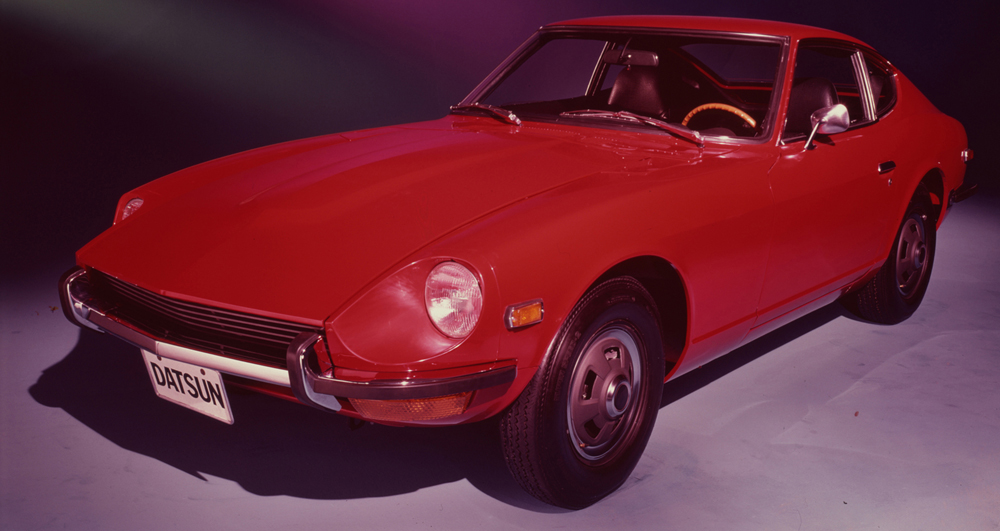
Z Cars (1969-1999)
- 1966
Nissan identifies a market for a new kind of sports car. Its product planners envision an agile, compact GT whose performance and comfort
would outrun its price. Nissan engineers begin work on a prototype, which would become the 240Z.
- 1969
The 240Z goes on sale in the U.S. on October 22, 1969. It features a 2.4-liter, six-cylinder, 150 horsepower engine and delivers a 0-60 time of
under nine seconds -- all for a price tag of only $3,526.
A Brief History : Six Generations of Z
October 22, 1969, the Datsun 240Z arrived in North America, heralding a new era in sports car design. The 240Z was a revelation to the automotive
world -- an affordable sports car that could be driven every day and was accessible to anyone with the $3,626 base price.
When the original Datsun 240Z debuted as a 1970 model, its design and performance were considered state-of-the-art: a 150-horsepower 2.4-liter
single overhead cam inline 6-cylinder engine, 4-wheel independent suspension, 14-inch wheels, choice of a 4-speed manual or 3-speed automatic
transmission, and a quarter-mile acceleration time of 17.1 seconds at 84.5 miles per hour. The 240Z was conceived as a closed coupe body, rather
than the typical open-top sports cars of the age, to enhance body rigidity and, therefore, improve handling and durability.
The journey from the original 240Z to the current Z cars. Interestingly, the 240Z might not have made the journey to America in the first place, if not for the efforts of one man.
Though many, many people were responsible for the design and engineering of the first generation 240Z, its success in North America can be
attributed to Yutaka Katayama, who was president of Nissan's U.S. operations at the time. Known affectionately as "Mr. K," he was convinced that
the company's new sports car design would be a hit in the U.S. There was just one problem -- the vehicle's name: the Fairlady Z (which is still used in the Japanese market today).
With a name change for this market to "240Z" and some aggressive marketing, including early motorsports success, the Z® became an instant hit --
bringing attention and buyers not just to Z®, but also to the entire brand.
S30 (1969-1978)
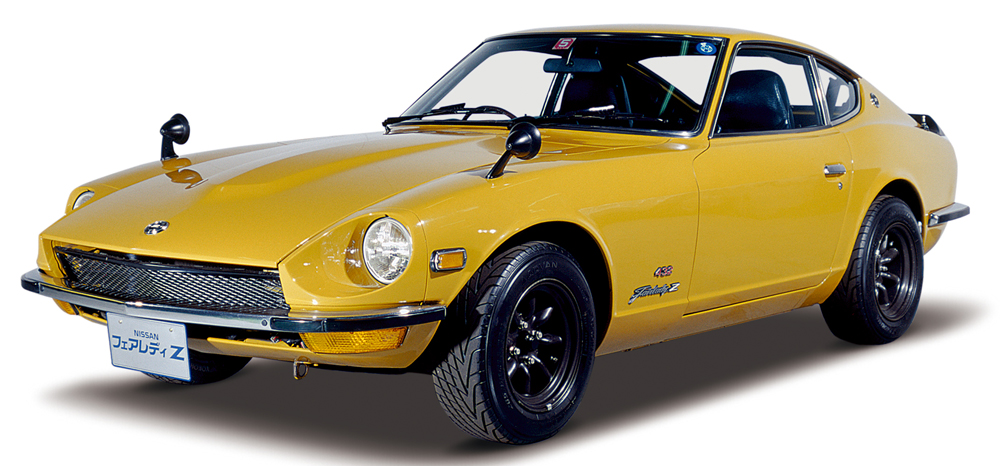
No.221 Fairlady Z 432 (1969 : PS30)
The first-generation Fairlady Z, launched in November 1969 (announced in October) was available in the high-power 432 model equipped with the
same 6-cylinder in line DOHC 24-valve S20engine (160PS) as the Skyline GT-R (PGC10). The name '432' refers to 4 valves, 3 carburetors and 2
camshafts. Magnesium wheels were fitted as standard. Announced in October, launched in November (S30, HS30 also).
- Overall.....................4,115 length /1,630 width /1,290mm height
- Wheelbase................2,305mm
- Tread (front/rear)......1,355/1,345mm
- Curb weight..............1,040kg
- Engine.....................S20 (6-cyl. in line, DOHC), 1,989cc
- Max. power..............118kW (160PS)/7,000rpm
- Max. torque..............177Nm (18kgm)/5,600rpm
- Transmission.............5-speed, floor shift
- Suspension...............Strut (front & rear)
- Brakes (front/rear).....Disc/drum
- Tires (wheels)...........6.95H-14 (5.5J magnesium)
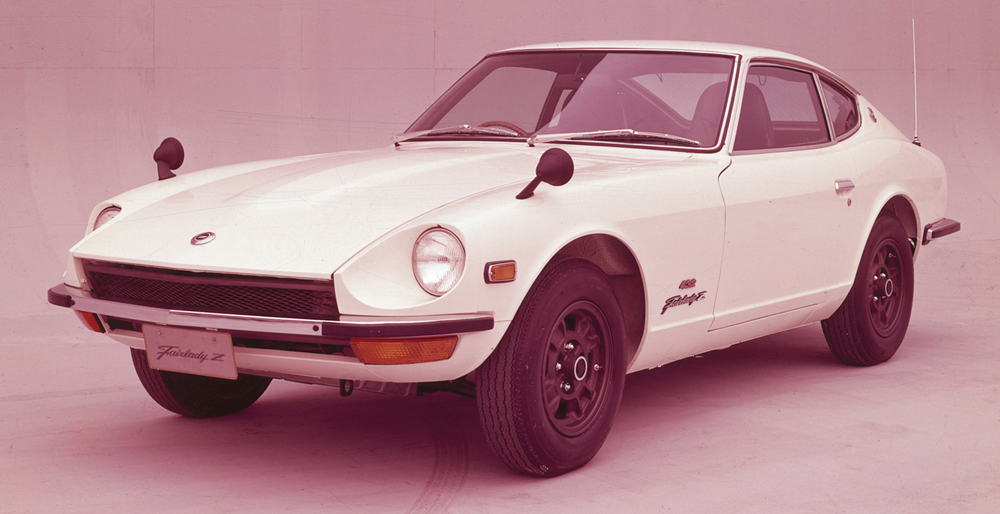
1969 Datsun Z432
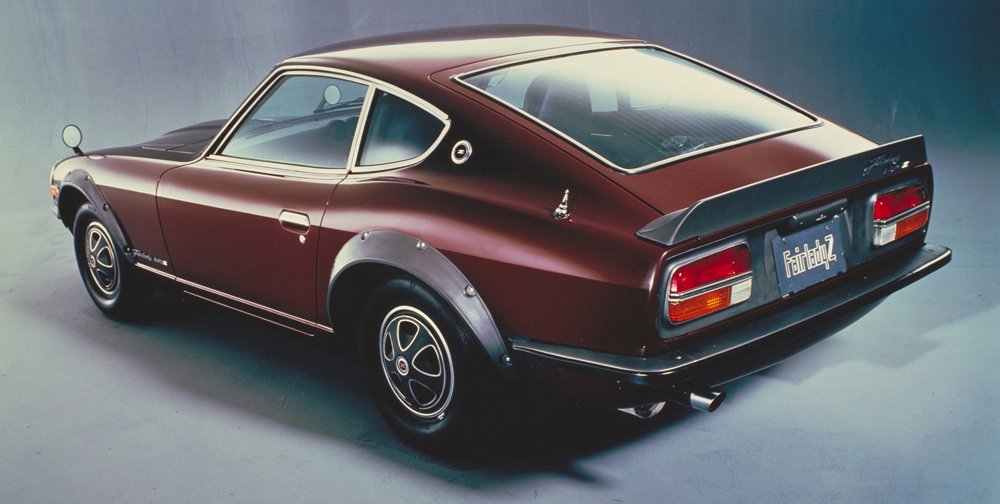
1971 Datsun 240Z G
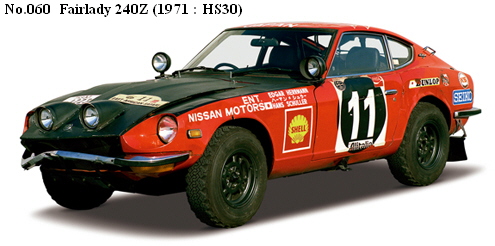 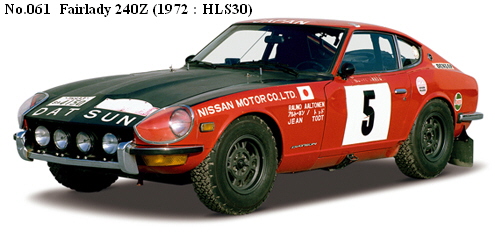
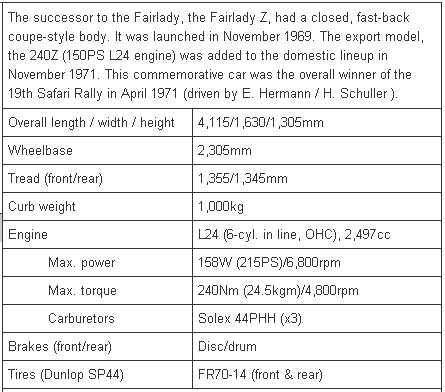 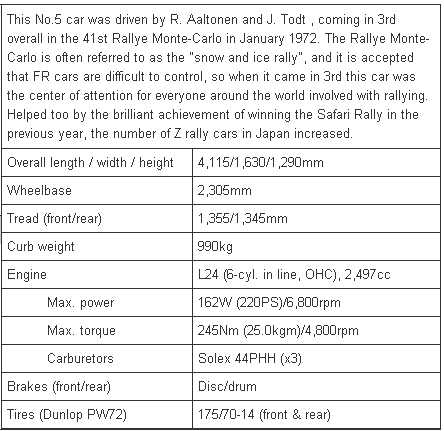
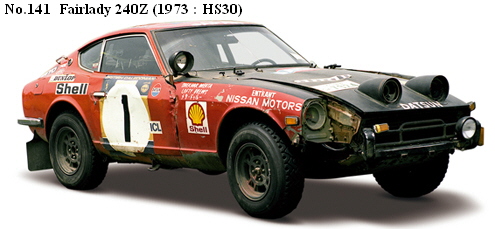 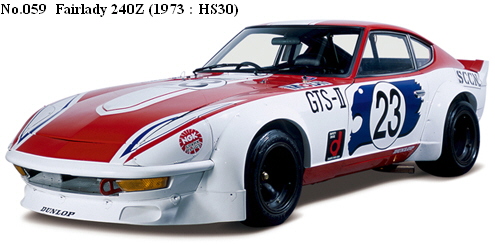
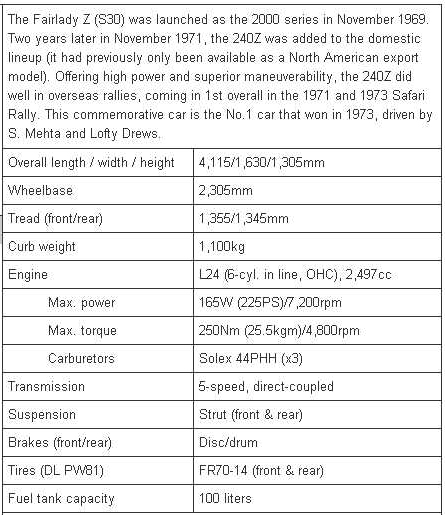 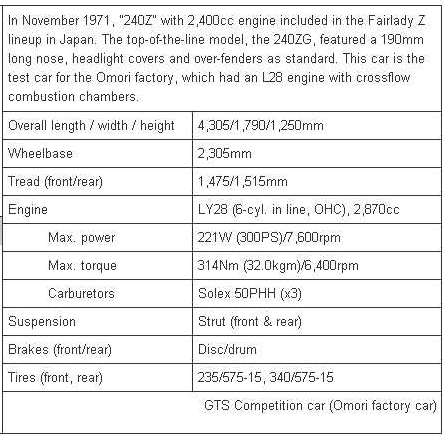
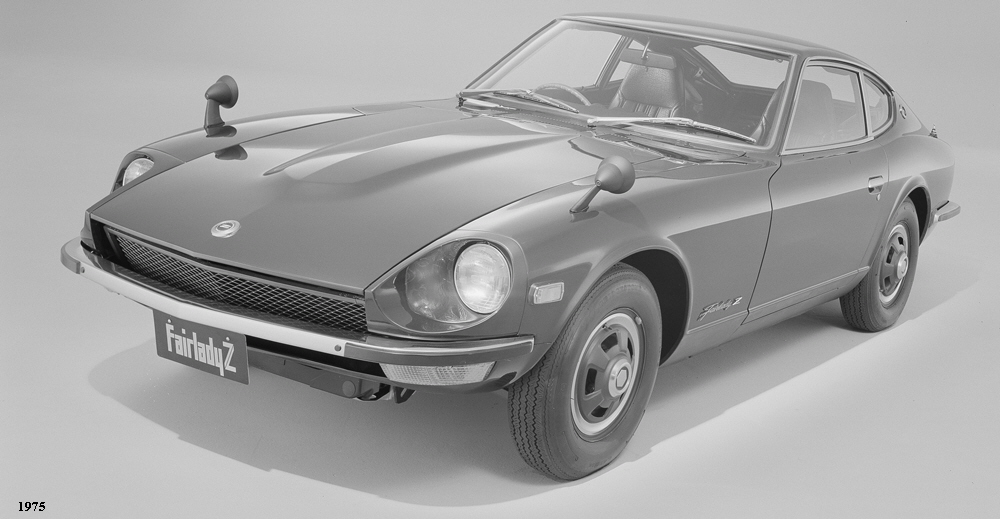
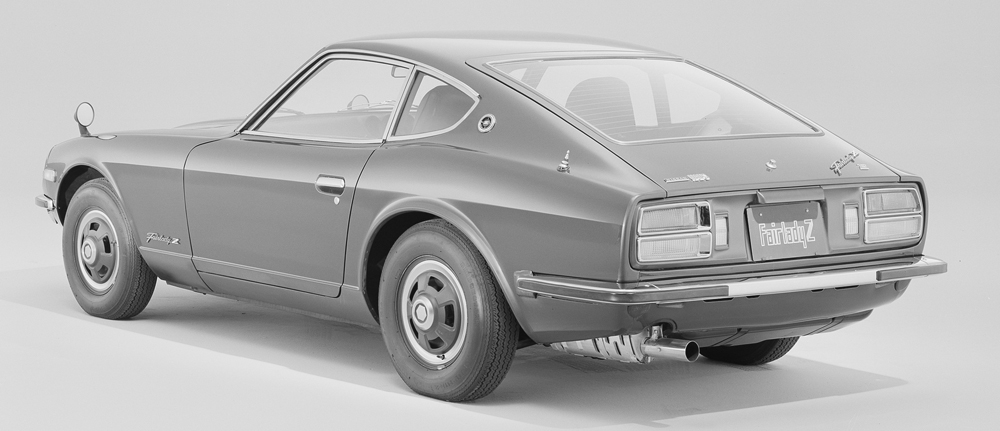
In 1974, as the engine displacement climbed to 2.6 liters the name changed to 260Z. The 2+2 model with an extended roofline and tiny back seat
also appeared. In 1975, engine size increased again to 2.8 liters and the name changed to 280Z. Z® cars continued to dominate on the racetrack,
with Pete Brock, John Morton, Bob Sharp and P.L. (Paul) Newman among the many talented drivers.
Z® sales continued to climb with the introduction in 1979 of the new second generation 280ZX. Now priced at just under $10,000, the 280ZX was
named Motor Trend "Import Car of the Year" and sales passed 86,000 units. T-tops and a turbocharged engine followed in the early '80s.
Nissan Motors released the Datsun 280Z model for the U.S. market in the 1975 model year. Both the 2-seat coupe and 2/2 (2+2) hatchback models remained available throughout the 197578 model year run of the 280Z.
For the 280Z, engine size was again increased, this time to 2.8 L, by enlarging the bore of the L26 engine to create the L28, and a reliable Bosch L-Jetronic fuel injection system was added.
1975 and 1976 models continued to be fitted with the Federally required 5 mph (8.0 km/h) crash test bumpers that were introduced for the mid-1974
model year of the 260z. These bumpers were smooth surfaced, and blended into smooth black rubber extensions as they met the body of the car.
1977 and 1978 models received bumpers with recessed channels added to the faces of the bumpers themselves, that blended into corrugated or
accordion style black rubber extension trim. Also new for the 1977 model year, 280Zs no longer received the full size spare tire, and instead had a
"space saver" spare and a larger fuel tank. This resulted in a raised rear deck area made of fiberboard, reducing cargo space. In 197778 an optional
5-speed manual transmission was available along side the 4-speed manual, and the 3-speed automatic options, which included a "5-speed" emblem on
the left bottom edge of the rear hatch. 1977 also saw an update from the charcoal painted hubcap style (with a chrome Z floating in the amber
center emblems) to a hubcap that resembled an alloy wheel, bearing a center cap with a chrome Z floating in a black circle.
In 1977 and 1978 respectively, Datsun offered two special edition models. The "Zap" edition was offered in 1977 as a "Special Decor Package". Zap
cars were finished in Sunshine Yellow paint, and sported black stripes down the center and sides, with yellow, red, and orange chevrons at the front
ends of the stripes. An estimated 1,000 "Zap Z" cars were offered in 1977. The "Zap Z" model was also used as the pace car in the 1977 Long Beach
Gran Prix. The Black Pearl edition (produced in 1978) came with Black Pearlescent paint and a "Special Appearance Package" (SAP), which consisted
of dual racing mirrors, rear window louvers, and a unique red and silver stripe. It is estimated that between 750-1,500 of these cars were produced.
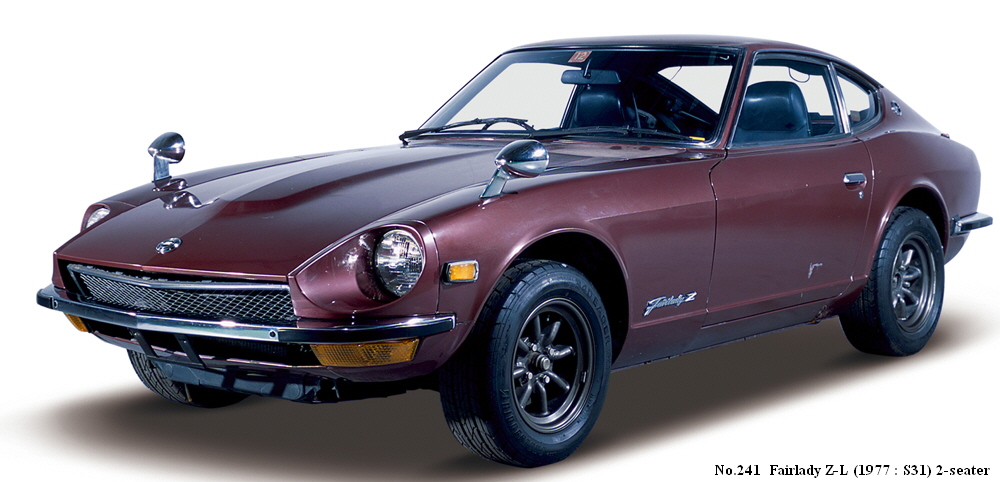
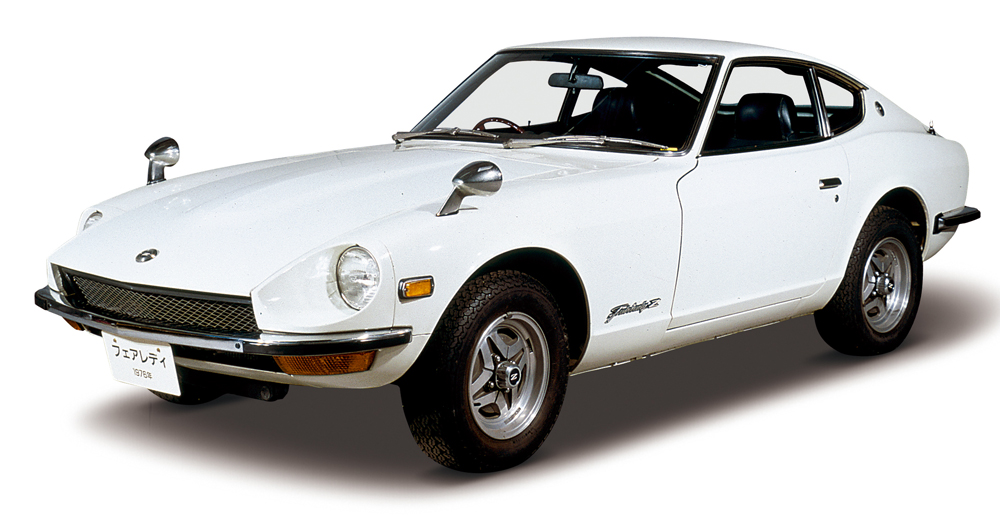
No.075 Fairlady Z-T (1977 : S31) 2-seater
The first-generation Fairlady Z (S30) was announced in October 1969 and launched in November that same year. In Japan, the 240Z was launched
two years later in November 1971, followed by the 2/2 model in January 1974. In July 1976, this car evolved into the S31 (1976 "NAPS"=Nissan
Anti-Pollution System= spec.). This Z-T (5-speed, floor shift only) was equipped with aluminum wheels, 195/70HR14 tires, and remote-controlled mirrors as standard.
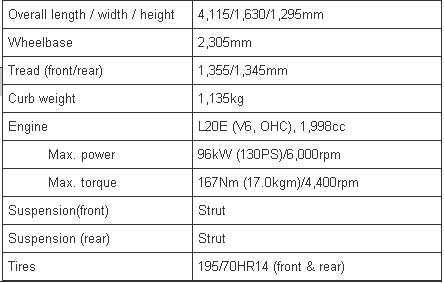 
S130 (1978-1983)

No.237 Fairlady 280Z-L (1978 : HS130)
A second-generation Z (S130), equipped with a 6-cylinder in line 2,758cc L28 engine was launched in August 1978 as the 280Z. Attracting interest
was the new styling, which featured the traditional long nose and short deck, blended with sharper lines, while the grille-less front end enhanced the
unified look of the body. Both the 2-seater and the 2/2 offered more spacious interiors, further improving comfort.
No.237 Fairlady 280Z-L (1978 : HS130) (ABOVE) (BELOW) No.248 Fairlady 280Z-T (1981 : HGS130)
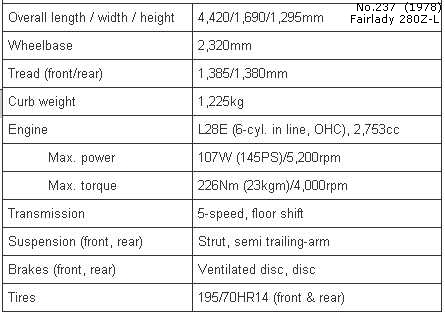 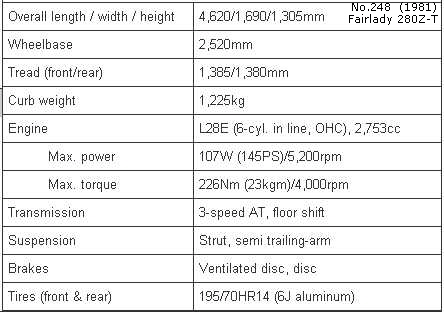

No.248 Fairlady 280Z-T (1981 : HGS130) 2+2
Building on the original S30 concept, the second-generation Z (S130), launched in August 1978, was a sports car that aimed to offer even more in
terms of comfort and ease of use. All models were now equipped with 4-wheel disc brakes. The 280Z was available as the Z-L and Z-T; the latter was equipped with air conditioner, power windows and aluminum wheels as standard.
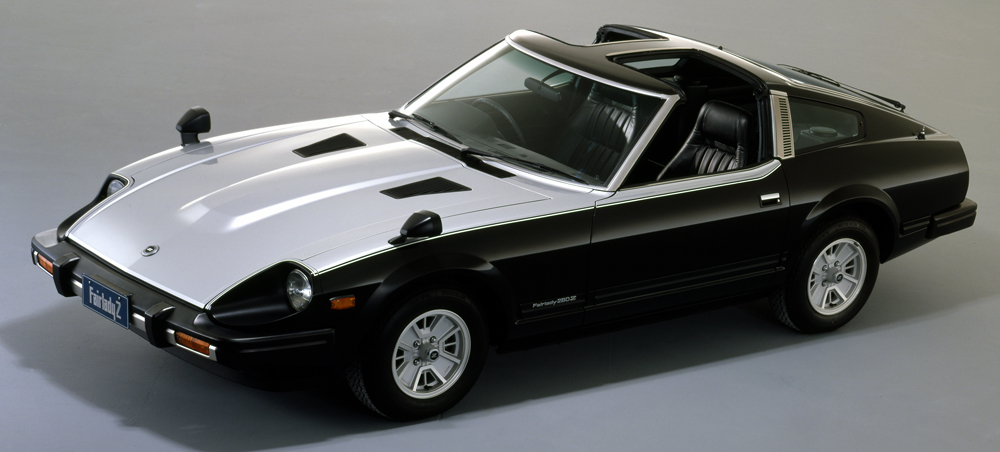
1980 Fairlady 280Z-T T-bar roof 2-seater
In 1979, Datsun homologated a high-downforce whale-tail type spoiler for the Datsun 280ZX by producing 1,001 280ZX-R cars. These cars also had
distinctive body decals and ZX-R logos. These cars were identical to the other cars of this year with the exception of the whale-tail and decal package.
From 1980 onwards, the 280ZX was available with a T-bar roof (on both the 2-seater and 2+2 body shapes). The T-bar roof panels could be removed and stored in bags in the rear of the car.
In 1980, a limited edition "10th Anniversary" car was released. Available in either black/gold or black/red two-tone paint, these cars came with leather
seating, and other special trim features. A total of 3000 of these cars were built - - 2500 in black and gold, and only 500 in the red and black.
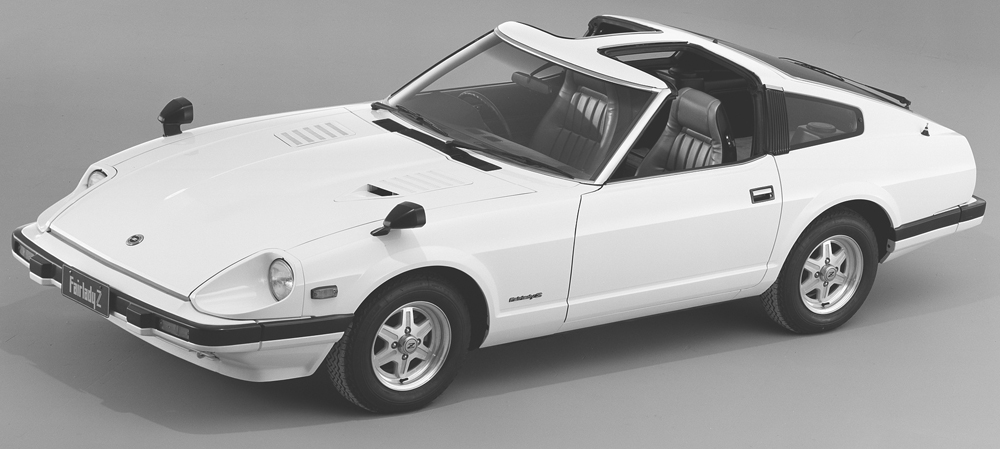
1981 Fairlady Z-T T-bar roof 2-seater
The 280ZX was a complete redesign, retaining only the L28 inline-6 engine and other driveline components from the 280Z. Both two-seater and four-seater (2+2) designs were offered.
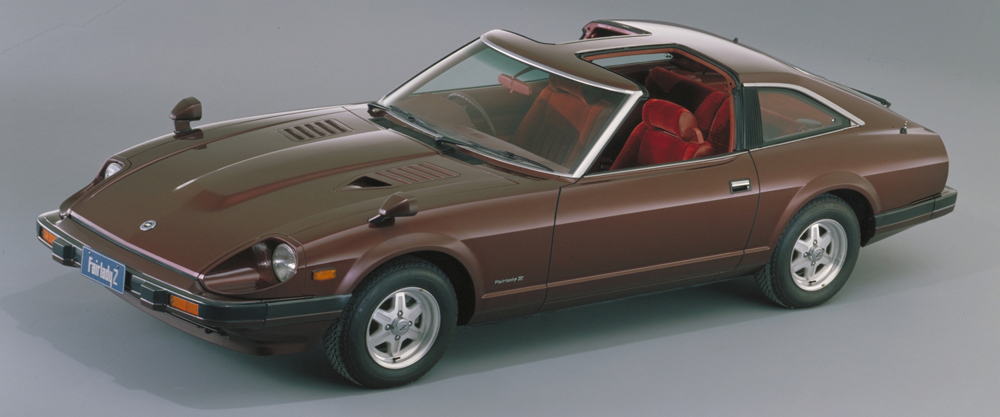
1981 Z T 2by2
1982 280Z-T 2by2 (below)
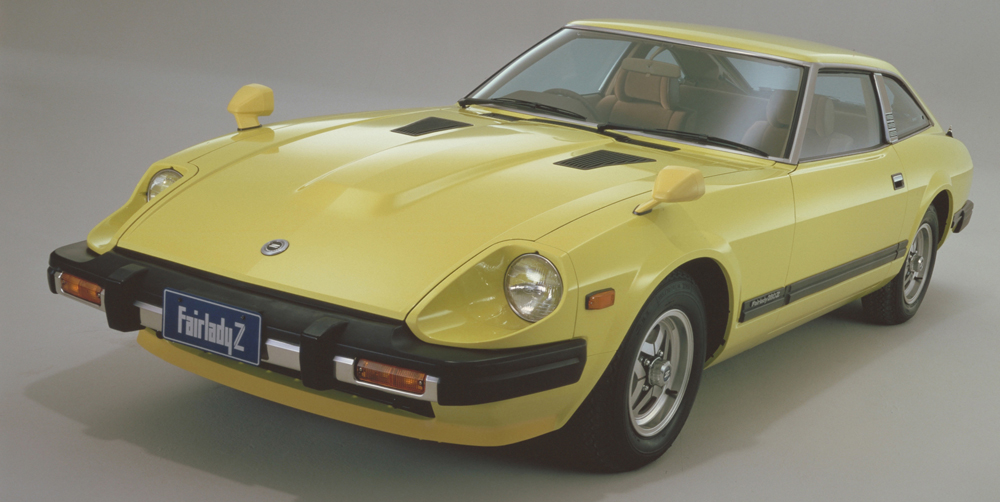
Z31 (1983-1989)
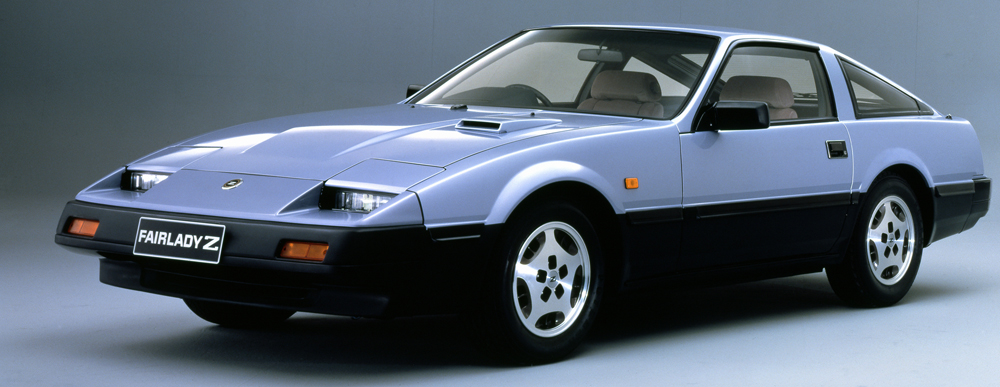
1983 Fairlady 300ZX 2-seater
Sold on the Japanese market from 1983 through 2000 and in the United States from 1984 through 1996, the 300ZX name followed the numerical
convention initiated with the 240Z, put forth by Yutaka Katayama, the one time president of Nissan Motors USA. The "X" designation had debuted
with the previous generation Z car, the 280ZX, to signify the presence of luxury and comfort oriented features. The Z31 model of 1983 through 1989 was the more popular model, with over 100,000 more units sold than the Z32.
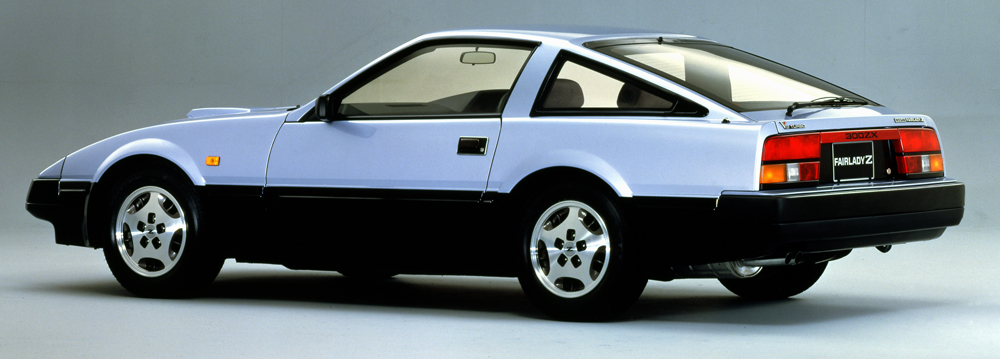
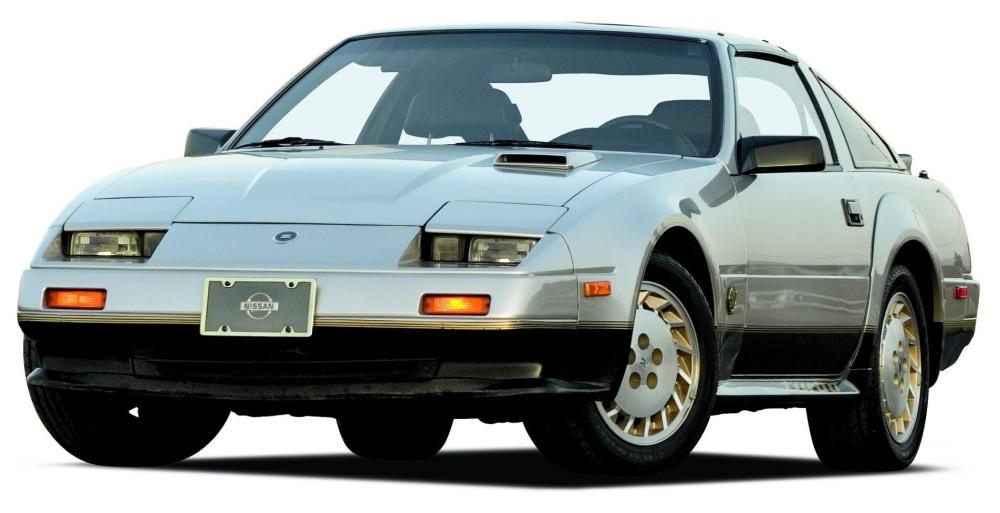
In 1984, Z® engine displacement increased again, with a 3.0-liter V6 replacing the classic Z® inline-6, and the 300ZX was born. Also, a specially
equipped model celebrating the company?s 50th anniversary and priced at $25,999 was introduced. The 1984 Z® was the best selling sports car in America.
Nissan manufactured two special Z31 models. The 1984 300ZX 50th Anniversary Edition, released to celebrate Nissan's half-century, was a fully
loaded turbocharged model with a Silver/Black color scheme. All 50th Anniversary Edition came equipped with a digital dash including MPG and
compass readouts, in-car electronic adjustable shocks, Bodysonic speakers in the seats, cruise and radio controls in the steering wheel, mirrored
t-tops, embroidered leather seats, embroidered floor mats, sixteen-inch (406 mm) aluminum wheels, rear fender flares, different front fenders, and
50th AE logo badges on the body. The only option available to the 50th Anniversary Edition was the choice between an automatic or a 5-speed
manual transmission. 5,148 AE models were produced for the US market. Notably, 1984 also marks the last year of turbochargers cooled entirely by
oil. 1985 turbo models are equipped with coolant passages to ensure turbo longevity. In 1988, the turbocharged Shiro Special debuted with pearl
white paint, stiffer springs and matched shocks, heavy-duty anti-sway bars, a unique front air dam, paint matched wheels, Recaro seats with
matching door panels, painted bumperettes, white painted doorhandles and a viscous limited-slip differential. No options were available for the Shiro,
meaning all Shiros were identical. It was the fastest car out of Japan, capable of 153 mph (246 km/h) speeds, as tested by Motor Trend with the
electronic speed limiter disabled. A total of 1002 Shiro Special Z31s were produced for the US market between January and March 1988.
Style and evolution

No.236 Fairlady Z 200ZG (1985 : GZ31)
The third-generation Z (Z31) was launched in 1983, the same year as the Fairlady production total passed 1 million units. Unlike the 2.8-liter, the
3.0-liter model was the first in Japan to use a V6 turbo engine and attracted much interest. Its beautiful silhouette, boasting a drag coefficient (Cd) of 0.31, and its unique parallel-rising headlights were very popular.
- Overall....................4,535 length /1,690 width /1,310mm height
- Wheelbase...............2,520mm
- Tread (front/rear).....1,415/1,435mm
- Curb weight.............1,270kg
- Engine.....................VG20E (V6, OHC), 1,998cc
- Max. power..............125kW (170PS)/6,000rpm
- Max. torque.............216Nm (22kgm)/3,600rpm
- Transmission............5-speed MT, floor shift
- Suspension..............Strut, semi trailing-arm
- Brakes (front, rear)....Ventilated disc, disc
- Tires.......................215/60R14 (front & rear)

1986 Fairlady 300ZR 2-seater T-bar roof
The Z31 body was slightly restyled in 1986 with the addition of side skirts, fender flares, and sixteen inch (406 mm) wheels (all directly from the 1984
50th Anniversary Edition with the exception of the fender flares). Many black plastic trim pieces were also painted to match the body color, and the
hood scoop was removed to provide a sleeker look. The car was given a final makeover in 1987 that included more aerodynamic bumpers, fog lamps
within the front air dam, and 9004 bulb-based headlamps that replaced the outdated sealed beam headlights. The 300ZX-titled reflector in the rear
was updated to a narrow set of tail lights running the entire width of the car and an LED third brake light on top of the rear hatch. The Z31
continued selling until 1989, more than any other Z-Car at the time. Over 70,000 units were sold in 1985 alone. Cars produced from 1984-1986 are
referred to as "Zenki" models, while cars produced from 1987-1989 are known as "Kouki" models signifying the change in body styling.
The new V6 (2960 cc) Single overhead cam engine was available as a naturally aspirated VG30E or a turbocharged VG30ET producing 160 hp (119
kW) and 200 hp (150 kW) respectively. The engine was either a type A or type B sub-designation from 1984 to March 1987, while models from April
1987 to 1989 had a W sub-designation. The W-series engines featured redesigned water jackets for additional cooling, and fully floating piston wrist
pins. The 1984 to 1987 turbo models featured a Garrett T3 turbocharger with a 7.8:1 compression ratio, whereas 1988 to 1989 models featured a low
inertia T25 turbocharger with an increased 8.3:1 compression ratio and slightly more power165 hp naturally aspirated and 205 hp (153 kW)
turbocharged. Finally, these engines were equipped with self-adjusting hydraulic valve lifters. The transmissions were a 5-speed manual or an optional
4-speed automatic (contrary to popular belief, all Z31 automatics were the E4N71B equipped with torque-converter lockup INCLUDING turbo models.)
All Z31's were equipped with a Nissan R200 rear differential, April 1987 and later turbo models received an R200 clutch limited-slip differential except
1988 Shiro Special's which had a Viscous-type limited slip. There were three trim models available: SF, GL and GLL. The SF model was only available in Canada.
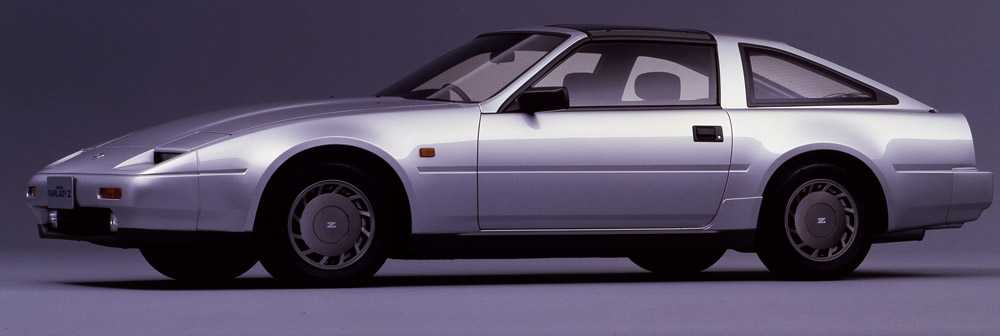
1986 2by2 300ZR

1986 2Seater 200 ZR-II

1988 2by2 300ZX (With 50% Tire and Viscous LSD)
Z32 (1989-1998)

1989 Fairlady 300ZX 2-seater T-bar roof
The next breakthrough in Z® history came in 1990 with the arrival of the totally redesigned, fourth generation 300ZX. Offered in two-seat and
four-seat 2+2 models, it offered an unheard of 222 horsepower and a top speed of 150 mph. A few months later, the 300ZX Turbo followed -- with 300 horsepower, a 160-mph top speed and a $33,000 price tag.
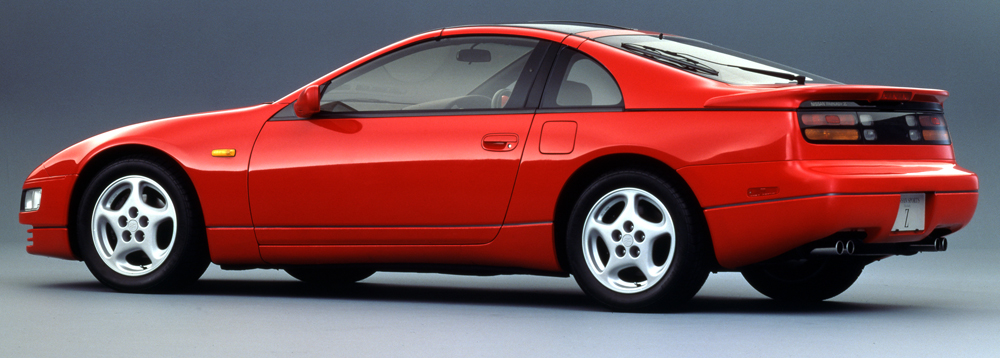
The only thing that remained unchanged from the previous generation 300ZX was the displacement of the 3-liter engine, now with dual overhead
camshafts (DOHC), variable valve timing (VVT) and producing a rated 222 hp (166 kW) and 198 lb·ft (268 N·m) in naturally aspirated form. The big
news for enthusiasts, however, was the turbo variant, now upgraded with twin Garrett turbochargers and dual intercoolers. This was good for 300 hp
(224 kW) along with 283 lb·ft (384 N·m) of torque. Performance varied from 0-60 times of 5.0-6.0 seconds depending on the source, and it had a governed top speed of 155 mph (249 km/h).
On the twin turbo models, four-wheel steering was available under the name Super HICAS (High Capacity Actively Controlled Steering). The twin turbochargers, intercoolers, and requisite plumbing made for a cramped engine bay.
Like previous generations Nissan offered a 2+2 model with the Z32. In 1992, a convertible version was introduced for the first time in the Z-car's
history, as a response to aftermarket conversions. All 300ZXs now featured T-tops as standard, yet there were some rare hardtops (known as slicktops) produced as well.
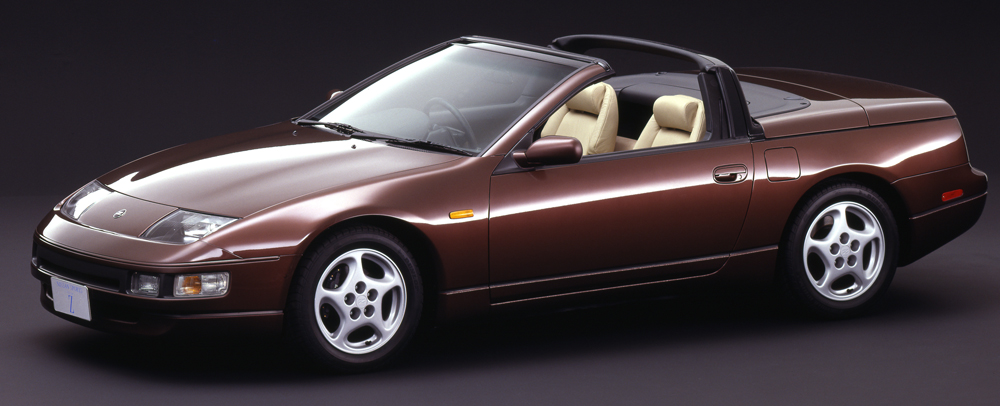
1992 Fairlady Z Convertible
By the mid-'90s, however, sports car sales in general were slowing and the Z had lost its "affordable" sports car positioning. With Z sales declining
sharply and the core "value" positioning no longer part of the "Z DNA," sales of the Z in the U.S. slumped and sales were stopped following the 1996
model year. The last 300ZX imported into the U.S. was inducted into the Petersen Automotive Museum in Los Angeles.
The mid-1990s trend toward SUVs and the rising Yen:Dollar ratio were both influential in ending North American 300ZX sales in 1996 at over 80,000
units sold (production for other markets continued until 2000). In 1989 the 300ZX was priced at about $30,000, but in its final year this price had
increased to around $50,000. This left many people questioning its value, and despite a final Commemorative Edition for the final 300 units shipped to
America (complete with decals and certificates of authenticity), the Z-Car was on hiatus. In Japan, however, the 300ZX lived until 2000 with a
face-lift in 1998 including a new fascia, tail lights, head lights, rear spoiler, and a few other minor changes.
Evolution
The Z32 chassis would likewise undergo several changes throughout its US production run in1991 and 1992.
1991
- Manual climate controls discontinued.
- New electronic climate controls allowing control over air flow direction, but no more ambient temp gauge.
- Nissan logo put on the front fascia (nose panel).
- Driver's airbag now optional.
- Air conditioner evaporator valve changed from aluminum to steel for better sound insulation.
- Naturally Aspirated model's brake rotors changed to Turbo units. Previous NA rotors were 4 mm thinner.
- CD player option added for both the TT and NA; it was previously only available in the NA.
- Bose stereo head unit changed.
- Brake master cylinder changed to new unit in February 1991.
1992
- Driver's airbag made standard.
- Dashboard and door complementary material changed from fabric to suede.
- Separate mirror heater switch eliminated (combined with rear defroster switch).
- Power adjustable driver's seat standard on TT.

No.254 Fairlady ZX Twin-turbo 2-seater T-bar Roof (1992 : KRLZ32)
The first-generation Fairlady Z (S30) was launched in 1969. Its predecessor, the Fairlady, had already been exported to North America and other
overseas markets, so by 1983 total production of the series had exceeded 1 million units - a spectacular record for a sports car.
The Z32 was the fourth-generation model; it was launched on June 10, 1989, twenty years after the original Fairlady Z made its debut. It was both
bold and beautiful with its wide, low-proportioned styling, its distinctive front mask featuring headlights slanted at over 60 degrees, its lively
silhouette created by the forward cabin design, and the short overhang that accentuated its excellent maneuverability.
Both 2-seater and 2/2 (4-seater) versions were available. All Z32 models featured the VG30, a V6 3-liter DOHC engine (twin-turbo or naturally
aspirated), as well Nissan's most advanced chassis technologies - including a 4-wheel multilink suspension, super HICAS, and 4-piston aluminum caliper disc brakes - ensuring even better performance.
The commemorative car is the 300ZX twin-turbo, T-bar roof export model (left-hand drive, for North America,) and was manufactured in 1992.
- Overall....................4,310 length /1,790 width / 1,250mm height
- Wheelbase...............2,450mm
- Tread (front/rear).....1,495/1,535mm
- Curb weight.............1,450kg
- Engine....................VG30DETT (V6, DOHC twin-turbo), 2,960cc
- Max. power..............206W (280PS)/6,400rpm
- Max. torque.............388Nm (39.6kgm)/3,600rpm
- Transmission............Full-range electronic 4-speed AT
- Suspension..............Multilink (front & rear)
- Brakes.....................Ventilated disc (front: 4-pod; rear 2-pod)
- Tires.......................225/50R16 92V (front & rear)

No.215 Fairlady Z Convertible (1992 : HZ32)
The fourth-generation (Z32) was launched exactly 20 years after the first-generation Fairlady Z in July 1989. The convertible was officially released
in August 1992, after its exhibition at the 1991 Tokyo Motor Show. The car is based on the two-seater 300ZX and features an independent trunk lid. The engine was a non-turbo VG30DE (230PS).
- Overall....................4,310 length /1,790 width /1,255mm height
- Wheelbase...............2,450mm
- Tread (front/rear).....1,495/1,535mm
- Curb weight.............1,530kg
- Engine.....................VG30DE (V6, DOHC), 2,960cc
- Max. power..............169W (230PS)/6,400rpm
- Max. torque.............273Nm (27.8kgm)/4,800rpm
- Transmission............Electronically controlled AT (E-AT)
- Suspension..............Multilink (front & rear)
- Brakes.....................Ventilated disc (front & rear)
- Tires.......................225/50R16 (front & rear)
Evolution
The Z32 chassis would likewise undergo several changes throughout its US production run between 1993 and 1996.
- 1993
- Turbo oil line insulation changed for better heat dissipation.
- Convertible option added.
- Brake caliper material changed from aluminum to iron, to help warpage/shimmy problems.
- New style fuel injectors for the non-turbo, (except convertible), that are less prone to premature failure.
- Upgraded Bose stereo made standard.
- AIV system completely eliminated.
- Non-turbo model, (except convertible), ECUs changed from 8-bit to 16-bit by Japan Electronic Control System Co..
- 1994
- Rear spoiler design changed to a taller, pedestal-type.
- Seat belts redesigned; they were moved from door mounts to true pillar mounts.
- SuperHICAS system changed to an electrically actuated unit.(previously power steering actuated).
- New style fuel injectors for the convertible.
- Passenger's side airbag introduced and made standard.
- Keyless entry added.
- Titanium keys discontinued in November 1994.
- 'Reset' button removed from clock.
- Off-white 'Pearl' color is dropped. Future 'Pearls' are more of a semi-metallic white.
- 1995
- New style fuel injectors for the twin-turbo
- Front fascia became body coloured instead of gray strip.
- Twin-turbo model ECUs changed from 8-bit to 16-bit (happened late in '94 model year)
- 1996
- Variable cam timing (NVTC) dropped.
- OBD II electronics introduced.
- Driver's seat back rest no longer included adjustable side bolsters.
(1996) Final Nissan Z-Car to be Inducted Into the Petersen Automotive Museum
Marking the end of an era, the last Nissan Z-car imported into the United States will be donated to and put on display in Los Angeles' Petersen
Automotive Museum during ceremonies to be held on Wednesday, August 28.
The Z-car model line, which evolved through four generations over the past 26 years -- from the original 1970 240Z to the 1996 300ZX -- not only
became the fastest-selling sports car of all time, but established itself as a classic in terms of automotive styling and performance. Additionally,
Nissan's Z-car was the first breakthrough vehicle in the United States for any Japanese manufacturer, beginning a new chapter in American automotive history.

No.216 Fairlady Z 300ZX (1998 : GCZ32)
Since the launch of the first-generation S30 (1969), the Fairlady Z became an exceptional hit as a sports car with a production total in excess of 1
million units. Special features of the fourth-generation model (Z32), launched in July 1989, included its spirited silhouette - wide proportions, slanted nose, and forward cabin. Both two-seater and 2/2 series were produced.
- Overall....................4,525 length /1,800 width /1,255mm height
- Wheelbase...............2,570mm
- Tread (front/rear).....1,495/1,535mm
- Curb weight.............1,570kg
- Engine.....................VG30DET (V6, DOHC), 2,960cc
- Max. power..............206W (280PS)/6,400rpm
- Max. torque.............388Nm (39.6kgm)/3,600rpm
- Transmission............Electronically controlled AT (E-AT)
- Suspension..............Multilink (front & rear)
- Brakes....................Ventilated disc (front & rear)
- Tires.......................225/50R16 (front & rear)
Date:October 7, 1998
Fairlady Z Undergoes Minor Model Change
Nissan Motor Co., Ltd. today announced the domestic release of the new Fairlady Z following the implementation of a minor model change.
Version R 2x2 T-bar Roof (equipped with optional features)
As part of this minor model change, interior and exterior trim parts have been changed to further accentuate the Fairlady Z's sharp, bold styling for
which it has been uniquely renowned over the years. Additionally, body stiffness has been increased and braking performance has been enhanced,
among other improvements. Safety equipment has also been further improved and expanded, including the adoption of an antilock braking system (ABS) as a standard feature on all models and the availability of xenon headlamps.
Overview of New Fairlady Z
1. Sharper, bolder appearance
The front bumper now incorporates a dynamic-looking central opening and the rear spoiler (standard on Version R series and 300ZX twin-turbo
models; optional on all other models) projects a heightened sense of unity with the body shape. Sill protectors (standard on Version R series models)
have also been adopted to create a sporty body form with a look of solid stability. Also newly available now are brightly polished aluminum wheels
(optional on all models) and xenon headlamps (standard on turbo models and optional on non-turbo models). These and other new features combine to give the Fairlady Z a sharper, bolder exterior.
Sporty-looking Lightning Yellow and Sonic Silver Metallic have been added as two new body colors, bringing the number of body color choices to six.
2. Enhanced interior quality
Besides new seat fabric and door trim fabric, the center cluster and the power window switch finisher now feature a black wood accent (standard on
300ZX models) and a new carbon accent (standard on Version R series models). In addition, handsome gold faces have been adopted for the
combination instruments (standard on all models) and tan-colored genuine leather seats combined with a two-tone interior color scheme are also
available (optional on 300ZX models). These and other features create an interior with an enhanced look of stellar quality.
3. Improved dynamic performance
The body stiffness of all model grades has been increased by using thicker structural members, resulting in a firmer driving sensation. On the Version
R models, body stiffness has been improved even further by adopting dovetail joints above the door locks to strength the coupling between the doors
and the body, in addition to using a larger floor tunnel member. Moreover, a dedicated suspension with sporty tuning has been adopted to enhance sporty dynamic performance and ride comfort.
Brake pedal effort has been reduced to provide a more refined braking feel by increasing the size of the brake master cylinder and changing the booster characteristics as well as the brake pad material.
4. Expanded roster of safety equipment
Xenon headlamps, which produce a larger amount of white light close to sunlight for improved visibility, have been adopted as standard equipment on
all twin-turbo models (optional on all non-turbo models). Additionally, ABS and a long-life water repellent coating on the front door windows have also been adopted as standard safety features on all models.
Price Range and Sales target
The Fairlady Z is priced from 3,070,000 yen to 4,820,000 yen in the Tokyo area.
Nissan projects a monthly sales volume of 100 units.
Specifications of the Fairlady Z
Grade
Overall Length (mm)4520
Overall Width (mm)1800
Overall Height (mm)1255
Wheelbase (mm)2570
TreadFront (mm)1495
Rear (mm)1535
Ground Clearance (mm)125
Curb Weight (kg) 1780
Turning Radius (m) 5.6
Steering Rack & Pinion with electronically controlled power assistance
SuspensionFront / Rear Independent, Multi-link
BrakesFront / Rear Ventilated disks
TiresFront / Rear 225/50R16 92V
Engine
Type VG30DETT DOHC, V6
Displacement(cc) 2960
Bore ~Stroke(mm) 87.0 ~ 83.0
Max. Power (PS/rpm)280 / 6400
Max. Torque(kg-m/rpm)39.6 / 3600
Compression Ratio 8.5 : 1
Induction EGI (ECCS)
Transmission
Electronically controlled 4-speed Automatic Transmission
Gear Ratio
1st 2.784
2nd 1.544
3rd 1.000
4th 0.694
Reverse 2.275
Final 3.692
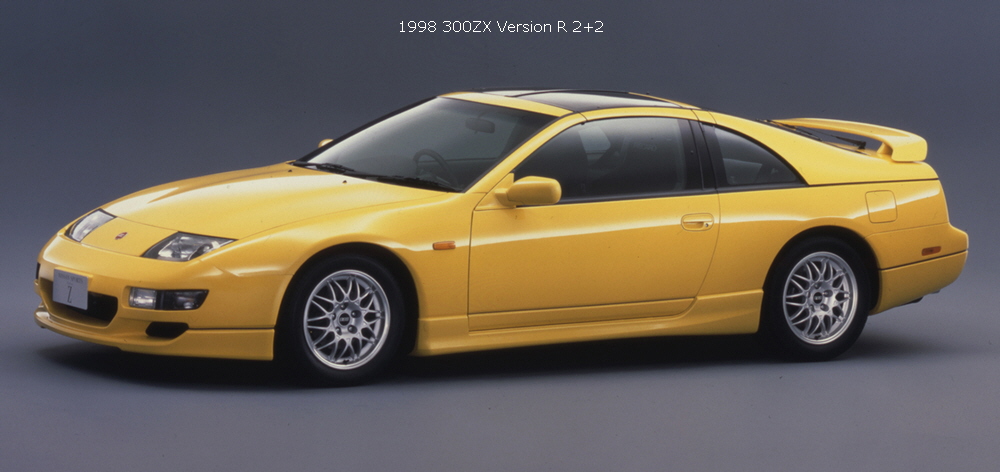
The next chapter of the Z history came just before the end of the century. In 1999, Nissan and Renault formed what has become the highly successful Renault-Nissan Alliance.
Mr. Carlos Ghosn was assigned by Renault to head the new management team. Among his first tasks was not just to look at the business aspects,
but to find the "soul" of the company. In interview after interview, people inside and outside the company brought up one model to him, one letter: Z.
Development of the new Z began later that year, with the return to the values of the original 240Z -- a car that sports car enthusiasts would look forward to driving everyday; quick, inspiring and affordable.
In summer 2002, the Z was reborn with the introduction of the 2003 350Z. It was delivered, as promised, with an MSRP of under $30,000.
|







































